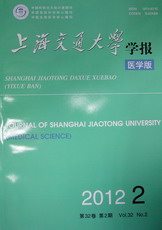Objective To investigate the expression of erythropoietin (EPO) and erythropoietin receptor (EPOR) after light-induced retinal injury in rats. Methods Thirty-two male SD rats were selected, light-induced retinal injury models were established in 29 rats (light-induced retinal injury group), and the other 3 rats were served as normal control group. The retinal tissues of rats in normal control group and those of rats in light-induced retinal injury group at the time points of 0 h, 6 h, 12 h, 24 h, 48 h, 72 h, 7 d and 14 d after light-induced retinal injury were obtained, the expression of EPO and EPOR protein and mRNA was detected by Western blotting and RT-PCR respectively, and the location of expression of EPO and EPOR protein was determined with immunohistochemical method. Results Western blotting detection revealed that the expression of EPO and EPOR protein increased after light-induced retinal injury, and reached the peak 48 h after light-induced retinal injury. The relative expression of EPO protein in light-induced retinal injury group was significantly higher than that in normal control group at the time points of 12 h, 24 h, 48 h and 72 h after light-induced retinal injury (P<0.05 or P<0.01), and the relative expression of EPOR protein in light-induced retinal injury group was significantly higher than that in normal control group at the time points of 6 h, 12 h, 24 h, 48 h, 72 h, 7 d and 14 d after light-induced retinal injury (P<0.05 or P<0.01). RT-PCR detection demonstrated that the expression of EPO and EPOR mRNA increased after light-induced retinal injury, and reached the peak 24 h and 48 h after light-induced retinal injury respectively. The relative expression of EPO mRNA in light-induced retinal injury group was significantly higher than that in normal control group at the time points of 12 h, 24 h, 48 h, 72 h, 7 d and 14 d after light-induced retinal injury (P<0.05 or P<0.01), and the relative expression of EPOR mRNA in light-induced retinal injury group was significantly higher than that in normal control group at the time points of 6 h, 12 h, 24 h, 48 h, 72 h, 7 d and 14 d after light-induced retinal injury (P<0.05 or P<0.01). Immunohistochemical observation indicated that 24 h after light-induced retinal injury, the expression of EPOR protein was slightly enhanced and that of EPO protein was relatively lower in the outer and inner segment of photoreceptor. Conclusion The expression of EPO and EPOR protein and mRNA in retinal tissues may time-dependently increase after light-induced retinal injury in rats, which indicates that endogenous EPO and EPOR may participate in the restoration mechanism of light-induced retinal injury.

